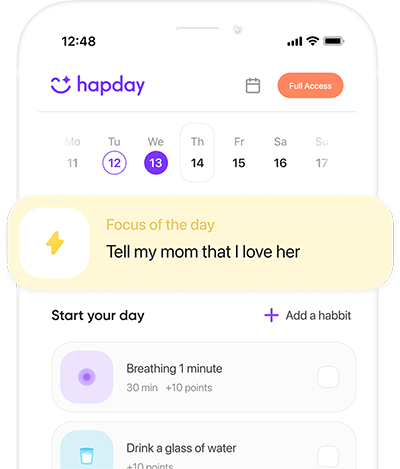The Science of Happiness: Boost Your Mood Today
Living in this fast-paced world makes hunting down happiness feel like, well, searching for a needle in a haystack sometimes, doesn’t it? Yet, it’s amazing how much light science can shine on this elusive feeling, revealing insights about the mysterious mechanics of happiness. Spoiler alert: it’s more than just a fleeting whimsy; it’s sort of like an anchor, deeply tied to our health and wellness. Yes, by diving into the science-y stuff behind happiness, we can actually find ways to lift our spirits and enrich our lives.
Table of Contents
- Understanding the Science of Happiness
- The Role of Neurotransmitters
- The Impact of Lifestyle Choices
- Practical Strategies to Boost Your Mood
- The Role of Technology in Boosting Mood
- Wrapping it Up
Understanding the Science of Happiness
So, what’s happiness made of? It’s not as simple as it sounds. The concept sort of ties together warm, fuzzy feelings with satisfaction and, let’s not forget, that feeling like you’re part of something bigger. Scientists puff up their cheeks and call this whole thing “subjective well-being,”—that’s the official jargon—ticking off both emotional highs and the thoughtful bits. Back in 2017, a paper in the Journal of Happiness Studies (Diener et al.) let us in on a secret: our genes, the world around us, and our own behavior are quite the sneaky factors playing a part in how content we feel.
The Role of Neurotransmitters
Now let’s talk brain chemistry—like, what’s actually brewing in our noggins when happiness hits. At the core of the science of happiness are neurotransmitters, the brain’s endearing little messengers that keep the mood train rolling. Ever heard of dopamine, the so-called “feel-good” hormone? It loves dishing out pleasure and reward. Then there’s serotonin, acting like a calming sage, stabilizing moods and adding to our happy reserves. A shot of enlightenment: exercise, chilling through meditation, or just good ol’ chitchatting with pals can coax these neurotransmitters to come out and play, lifting our spirits (Young, 2007). Handy, right?
The Impact of Lifestyle Choices
Believe it or not, it’s the little lifestyle choices that sneakily shape our happiness. The World Happiness Report didn’t hold back, singing praises of healthy eats, sweat sessions, catching z’s, and—get this—hanging out with real humans. Toss these ingredients into the pot and, yup, you’ve cooked up an atmosphere that encourages happiness to kick back and stay a while (Helliwell et al., 2022).
Practical Strategies to Boost Your Mood
Armed with this basic knowledge of happiness science, why not sprinkle in some practical techniques to boost your happy vibes? Yeah, it’s backed by research, but definitely needs a personal twist!
- Engage in Physical Activity: Exercise. Do we need to say it again? If you’ve got the blues, moving around is a spot-on remedy. Thirty minutes of moderate shimmying, three times a week, is like a magic charm that wards off sadness and depression, according to The American Journal of Psychology (Craft & Perna, 2004). Endorphins—those charming pain-busters—come out to play, leaving you feeling euphoric. Fair warning: once you start, you’ll probably keep coming back.
- Practice Mindfulness and Meditation: Next up: mindfulness and meditation—your new besties when it comes to dialing down stress and cranking up the happy. A deep dive in Psychological Science mentioned just how significantly these practices can polish our mood and mental wellness (Grossman et al., 2004). A few moments of deep breathing or a guided meditation sesh can shift your view on the world, peeling away a little stress.
- Cultivate Gratitude: Ever tried jotting down things you’re thankful for? It turns out, cultivating gratitude can be a pretty nifty trick for ramping up happiness levels. Folks who regularly note their blessings tend to swim in more positive emotions and life satisfaction, says a study by Emmons & McCullough (2003). When you shift the focus from “what I’m lacking” to “what I have,” a warm glow of contentment can wrap around you.
- Foster Strong Social Connections: People need other people. It’s just that basic. Building strong social bonds fills happiness quotas like nobody’s business. In a study shared in Social Science & Medicine, those with solid social circles tend to dodge mental health dips and report higher well-being (Umberson & Montez, 2010). Ring up a friend, catch a movie, or just spend time with loved ones—the connections definitely count.
- Set and Pursue Meaningful Goals: Goals are no joke—they can totally transform your happiness horizon. Pursuing goals tied to what really matters to you hikes up purpose and gives motivation a boost. In 1999, a study in the Journal of Personality and Social Psychology highlighted how this is linked to higher happiness (Emmons, 1999). It’s about what makes you tick, so go on, craft those goals and stride toward them with zest.
The Role of Technology in Boosting Mood
In our tech-loving era, gadgets aren’t just distractions—they can be allies in the happiness quest. Take Hapday, for instance. It’s an app crafted with scientific excursions into happiness at its heart, offering up brainy exercises for a happier mindset. A few pokes on your phone, and voila, you’re exploring happiness on the go!
Wrapping it Up
The geeky side of happiness hands us the map to a joyful and fulfilling adventure. Just lace up those sneakers, hit that meditation mat, note down your thank-yous, hug your friends close, and chase after what means the world to you. Ready to give these a whirl? With a little action and scientific insight, happiness isn’t just a dream—it’s a reality you can indulge in every day.
Eager to start your happiness journey with insightful support? Check out what the science of happiness can do for you over at Hapday and start living your happiest life today!
Disclaimer: Please remember to adapt these strategies to your personal context and seek professional advice where needed.
References
- Diener, E., Lucas, R. E., Schimmack, U., & Helliwell, J. F. (2017). Well-Being for Public Policy. Oxford University Press. https://www.springer.com/journal/10902
- Young, S. N. (2007). How to increase serotonin in the human brain without drugs. Journal of Psychiatry & Neuroscience, 32(6), 394–399. https://www.ncbi.nlm.nih.gov/pmc/articles/PMC2077351/
- Helliwell, J. F., Layard, R., & Sachs, J. (2022). World Happiness Report. Sustainable Development Solutions Network. https://worldhappiness.report/
- Craft, L. L., & Perna, F. M. (2004). The benefits of exercise for the clinically depressed. Primary Care Companion to The Journal of Clinical Psychiatry, 6(3), 104–111. https://www.ncbi.nlm.nih.gov/pmc/articles/PMC474733/
- Grossman, P., Niemann, L., Schmidt, S., & Walach, H. (2004). Mindfulness-based stress reduction and health benefits: A meta-analysis. Journal of Psychosomatic Research, 57(1), 35–43. https://www.sciencedirect.com/science/article/abs/pii/S0022399903005737
- Emmons, R. A., & McCullough, M. E. (2003). Counting blessings versus burdens: An experimental investigation of gratitude and subjective well-being in daily life. Journal of Personality and Social Psychology, 84(2), 377. https://psycnet.apa.org/doi/10.1037/0022-3514.84.2.377
- Umberson, D., & Montez, J. K. (2010). Social relationships and health: A flashpoint for health policy. Journal of Health and Social Behavior, 51(1_suppl), S54-S66.

